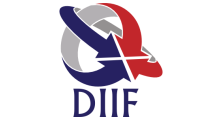Lethality of Naja nigricollis Reinhardt venom and antivenom activity of Azadirachta indica A. Juss. leaf extracts on albino rats
DOI:
https://doi.org/10.30574/gscbps.2020.12.2.0244Keywords:
Naja nigricollis, Venom, Lethality, Azadirachta indica, AntivenomAbstract
Snakebite remains an important cause of morbidity and mortality in Nigeria. Conventionally, the means of treatment is parenteral administration of serum-based antivenins. But due to the limitations of these antivenins, snakebite victims in many Nigerian communities are mostly treated with herbal antidotes. Hence, this research was designed to evaluate the lethality of Naja nigricollis Reinhardt venom and screen the antivenom activity of Azadirachta indica A. Juss. leaf extracts with a view to replacing the serum-based antivenin. The methanol extract of A. indica leaf was screened against venom-induced lethal effect in albino rats using standard methods. The crude methanol extract was subjected to solvent-fractionation, and the fractions were also screened against the venom-induced lethal effect in albino rats. The lethal doses, 50% (LD50) and 100% (LD100) of the venom were 0.389 and 3.891 mg/kg b. wt. respectively. The crude extract and its fractions exhibited antivenom activities with varying degrees of efficacy. The crude methanol extract and its hexane and ethyl acetate fractions presented animal mean survival time of 22.51 ± 2.38 h, 23.68 ± 0.89 h and 21.98 ± 1.36 h respectively against LD100 of the venom. These are significantly different when compared with the mean survival time of the venom control groups. Hence, these findings suggest that A. indica leaf has potent antivenom activity and this can serve as leads for the development of safe, readily available and affordable antivenoms.
Metrics
References
Faruq UZ, Zuru AA, Abdulrahman FW and Bilbis LS. (2002). Preliminary Screening of Sclerocarya birrea Bark as Snake Venom Antidote against Naja nigricollis. Nig. J. Biochem. Mol. Biol, 17, 1-8.
Razi MT, Asad MHHB, Khan T, Chaudhary MZ, Ansari MT, Arshad MA and Najamus-Saqib Q. (2011). Antihaemorrhagic (Antivenom) Potentials of Fagonia Cretica against Pakistani Cobra Venom (Naja Naja Karachiensis). Nat. Prod. Res, 25, 1902-1907.
Sani I, Bello F, Fakai IM and Abdulhamid A. (2020). Evaluation of Antisnake Venom Activities of Some Medicinal Plants Using Albino Rats. Sch. Int. J. Tradit. Complement. Med, 3(6), 111-117.
World Health Organization. (WHO). (2017). Snakebite envenoming. Fact sheet.
Williams D, Gutiérrez JM, Harrison R, Warrell DA, White J, Winkel KD, Gopalakrishnakone P, Global Snake Bite Initiative Working Group, & International Society on . (2010). The Global Snake Bite Initiative: an antidote for snake bite. Lancet (London, England), 375(9708), 89–91.
Sani I, Umar RA, Hassan SW and Faruq UZ. (2018). Antisnake Venoms and their Mechanisms of Action: A Review. Saudi J. Med. Pharm. Sci, 4(5), 512-520.
Habib AG, Gebi UI and Onyemelukwe GC. (2001). Snakebite in Nigeria. Afr. J. Med. Sci, 30, 171-178.
Habib AG. (2015). Venomous Snakes and Snake Envenomation in Nigeria. In: Clinical Toxinology in Asia Pacific and Africa, 2, Springer, 275-298.
Gutierrez JM, Fan HW, Silvera CL and Angulo Y. (2009). Stability, distribution and use of antivenoms for snakebite envenomation in Latin America: Report of a workshop. Toxicon, 53, 625-630.
Sani I, Umar AA, Jiga SA, Bello F, Abdulhamid A and Fakai IM. (2020). Isolation, Purification and Partial Characterization of Antisnake Venom Plant Peptide (BRS-P19) from Bauhinia rufescens (LAM. FAM.) Seed as Potential Alternative to Serum-based Antivenin. J. Biotech. Res, 6(4), 18-26.
EL-Mahmood AM, Doughari JH and Ladan N. (2008). Antimicrobial screening of stem bark extracts of Vitellaria paradoxa against some enteric pathogenic microorganisms. Afr. J. Pharmacol, 2(5), 12.
Sani I, Umar RA, Hassan SW, Faruq UZ and Bello F. (2020). Isolation of Antisnake Venom Agents from Azadirachta indica (A. Juss) Leaf Extracts. Acad. J. Chem, 5(2), 10-16.
Abubakar MS, Sule MI, Pateh UU, Abdurahman EM, Haruna AK and Jahun BM. (2000). In vitro snake venom detoxifying action of the leaf extract of Guiera senegalensis. J. Ethnopharmacol, 69(3), 253-257.
Adzu B, Abubakar MS, Izebe KS, Akumka DD and Gamaniel KS. (2005). Effect of Annona senegalensis root-bark extracts on Naja nigricollis venom in rats. J. Ethnopharmacol, 96(3), 507-513.
Dhananjaya BL, Zameer F, Girish KS and D'Souza CJ. (2011). Anti-venom potential of aqueous extract of stem bark of Mangifera indica L. against Daboia russellii (Russell's viper) venom. Ind. J. Biochem. Bioph, 48(3), 175-183.
Goswami PK, Samant M and Srivastava RS. (2014). Snake Venom, Anti-Snake Venom and Potential of Snake Venom. Inter. J. Pharm. Pharmec. Sci, 6(5), 4-7.
Soares AM, Januario AH, Lourenco MV, Pereira AMS and Pereira PS. (2004). Neutralizing effects of Brazilian plants against snake venom. Drug Fut, 29(11), 1105-17.
Samy RP, Thwin MM, Gopalkrishnakone P and Ignacimuthu S. (2008). Ethnobotanical Survey of Folk Plants for the Treatment of Snakebites in Southern Part of Tamilnadu. J. Ethnopharmacol, 115, 302-312.
Sani I, Umar RA, Hassan SW, Faruq UZ, Bello F and Abdulhamid A. (2020). Inhibition of Snake Venom Enzymes and Antivenom Adjuvant Effects of Azadirachta indica A. Juss. (Meliaceae) Leaf Extracts. European J. Med. Plants, 31(10), 114-128.
Bhanwara S, Singh J and Khosla P. (2000). Effect of Azadirachta indica (Neem) leaf aqueous extract on paracetamol-induced liver damage in rats. Indian J. Physiol. Pharmacol, 44, 64-8.
El-Mahmood AM, Ogbonna OB and Raji M. (2010). The antibacterial activity of Azadarichta indica (neem) seeds extracts against bacterial pathogens associated with eye and ear infections. J. Med. Plants Res, 4(14), 1414-1421.
Biswas K, Ishita C, Ranajit KB and Uday B. (2002). Biological activities and medicinal properties of Neem (Azadirachta indica). Curr. Sci, 82(11), 1336-1345.
Biu AA, Yusufu SD and Rabo JS. (2010). Acute toxicity study on neem (Azadirachta indica, Juss) leaf aqueous extract in chicken (Gallus gallus domesticus). Afr. Sci, 11, 6881-6895.
Ali A. (1999). Textbook of Pharmacognosy. New Delhi, India: Publication and Information Directorate.
Hossain MA, Shah MD and Sakari M. (2011). Gas chromatography-mass spectrometry analysis of various organic extracts of Merremia borneensis from Sabah. Asian Pac. J. Trop. Med, 4, 637-641.
Kokate C, Purohit AP and Gokhale SB. (2010). Pharmacognosy. Maharashtra, India: Nirali Prakashan.
Sani I, Abdulhamid A, Bello F, Sulaiman A and Aminu H. (2020). Antisnake Venom Effect of Diospyros mespiliformis Stem-Bark Extract on Naja nigricollis Venom in Albino Rats. Singapore J. Sci. Res, 10(3), In Press.
Aboubakar OBF, Bella NMT, Ngo-Lemba TE, Bilanda DC and Dimo T. (2012). Antihypertensive Activity of Jateorhiza meacrantha (Menispermaceae) Aqueous Extract on Ethanol-induced Hypertension in Wister Albino Rats. Intern. J. Pharm. Sci, 4(2), 293-298.
Animal Use and Care Committee (AUCC). (2009). Guide to the use and care of experimental animals. Animal use and Care Committee, National Veterinary Research Institute, Vom, Nigeria, 1.
Theakston RDG and Reid. (1983). Development of Simple Standard Assay Procedures for the Characterization of Snake Venom. Bull. World Heal. Org, 61, 949-956.
Finney DJ. (Ed.) (1952). Probit Analysis. Cambridge, England, Cambridge University Press.
Premendran SJ, Salwe KJ, Pathak S, Brahmane R and Manimekalai K. (2011). Anti-cobra venom activity of plant Andrographis paniculata and its comparison with polyvalent antisnake venom. J. Nat. Sci., Biol. Med, 2(2), 198-204.
Dupont S, Caffin N, Bhandari B and Dykes GA. (2006). In Vitro Antimicrobial Activity of Australian herb extracts against food related bacteria. Food Cont, 17, 929-932.
Mbatchou VC and Kossono I. (2012). Aphrodisiac activity of oils from Anacardium occidentale L. seeds and seed shells. Phytopharmacol, 2(1), 81-91.
Harborne JB. (1993). Phytochemistry. Academic press, London, 89-132.
Amorim ELC, Nascimento JE, Monteiro JM, Peixot-Sobrinho TJS, Araujo TAS and Albuquerque UP. (2008). A simple and accurate procedure for the determination of tannin and flavonoid levels and some applications in ethnobotany and ethnopharmacology. Fun. Ecos. Commun, 2(1), 88-94.
Obadoni BO and Ochuko PO. (2001). Phytochemical studies and comparative efficacy of the crude extracts of some homeostatic plants in Edo and Delta States of Nigeria. J. pure. Appl. Sci, 8, 203-208.
Mcdonald SD, Prenzler M and Robards K. (2001). Phenolic content and antioxidant activity of olive extracts. Food chem, 73, 73-84.
Lee CY, Lioe C and Lin SY. (1971). Identification of cholinesterase inactivating factor in cobra venom with cardiotoxin. Toxicon, 9(1), 429-433.
Omale S, Aguiyis JC, Wannang NN, Ogbole E and Amagon KI. (2012). Effects of the ethanolic extract of Parinari curatellifolia on blood clotting factors in rats pretreated with venom of Naja nigricollis. Drug Inv. Tod, 4(4), 363-364.
Jayanthi GP and Gowda TV. (1998). Geographed variation in India in the composition and lethal potency of viper venom. Toxicon, 26(30), 257-264.
Botham PA. (2004). Compositions of snake toxic substances. Toxicol. in Vitr, 18, 227-230.
Turner R. (2004). Acute toxicity: The determination of LD50. In: Screening Methods in Pharmacology, Academic Press, New York, 300.
Rajendran K, Annie S, Maneesh MR and Vijaya B. (2010). In vitro and In vivo antisnake venom (Daboia russelli) studies on various leaf extracts of Acalpha indica Linn. Int. J. Phytomed, 2, 217-220.
De N and Ifeoma E. (2002). Antimicrobial effects of components of the bark extracts of neem (Azadirachta indica A. Juss.). J. Tech. Devel, 8, 2328.
Santhosh MS, Hemshekhar M, Sunitha K, Thushara RM, Jnaneshwari S, Kemparaju K and Girish KS. (2013). Snake Venom Induced Local Toxicities: Plant Secondary Metabolites as an Auxiliary Therapy. Mini-Rev. Med. Chem, 13, 106-123.
Lewis RL and Gutmann L. (2004). Snake venoms and the neuromuscular junction. Semin. Neurol, 24, 175-179.
Leanpolchareanchai J, Pithayankul P, Bavovada R and Saparpakorn P. (2009). Molecular docking studies and anti-enzymatic activities of Thai mango seed kernel extract against snake venoms. Molecules, 14(4), 1404-1422.
Sani I, Umar RA, Hassan SW, Faruq UZ, Bello F, Aminu H and Sulaiman A. (2020). Hepatoprotective Effect of Azadirachta indica Leaf Fractionated Extracts against Snake Venom Toxicity on Albino Rats. Saudi J. Biomed. Res, 5(6), 112-117.
Akunyili DN and Akubue PI. (1986). Schumanniofoside, the antisnake venom principle from the stem bark of Schumanniophyton magnificum Harms. J. Ethnopharmacol, 18, 176-172.
Okonogi T, Hattori Z, Ogiso A and Mitsui S. (1979). Detoxification by persimmon tannin of snake venom and bacterial toxins. Toxicon, 17(5), 524 – 527.
Alam MI, Auddy B and Gomes A. (1994). Isolation, purification and partial characterization of viper venom inhibiting factor from the root extract of the Indian medicinal plant sarsaparilla (Hemidesmus indicus R. Br.). Toxicon, 32(12), 1551-1557.
Sani I, Umar RA, Hassan SW, Faruq UZ, Bello F and Abdulhamid A. (2019). Protective Effect of Azadirachta indica Leaf Fractionated Extracts on Renal and Haematological Indices against Snake Venom Toxicity in Albino Rats. Res. J. Med. Plants, 13(3), 103-108.
Francischetti IM, Monteiro RQ, Guimaraes JA and Francischetti B. (1997). Identification of gycyrrhizin as a thrombin inhibitor. Biochem. Biophysiol. Comm, 235(1), 259-263.
Assafim M, Ferreira MS, Frattani FS, Guimaraes JA, Monteiro RQ and Zingali RB. (2006). Counteracting effect of glycyrrhizin on the hemostatic abnormalities induced by Borthrops jararaca snake venom. J. Pharmacol, 148, 807.
Sani I, Umar RA, Hassan SW, Faruq UZ, Abdulhamid A, Bello F and Fakai IM. (2019). Major Enzymes from Snake Venoms: Mechanisms of Action and Pharmacological Applications. Asian J. Biol. Sci, 12(3), 396-403.
Downloads
Published
How to Cite
Issue
Section
License

This work is licensed under a Creative Commons Attribution-NonCommercial-ShareAlike 4.0 International License.
















